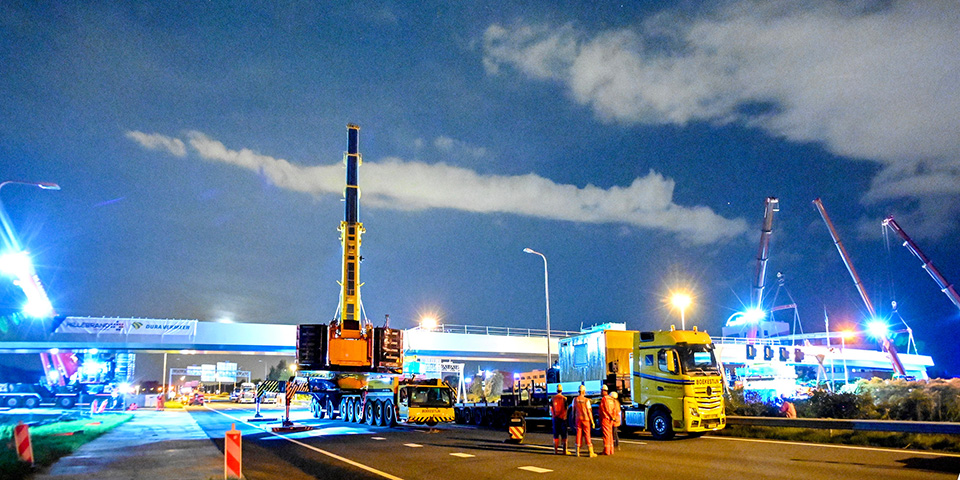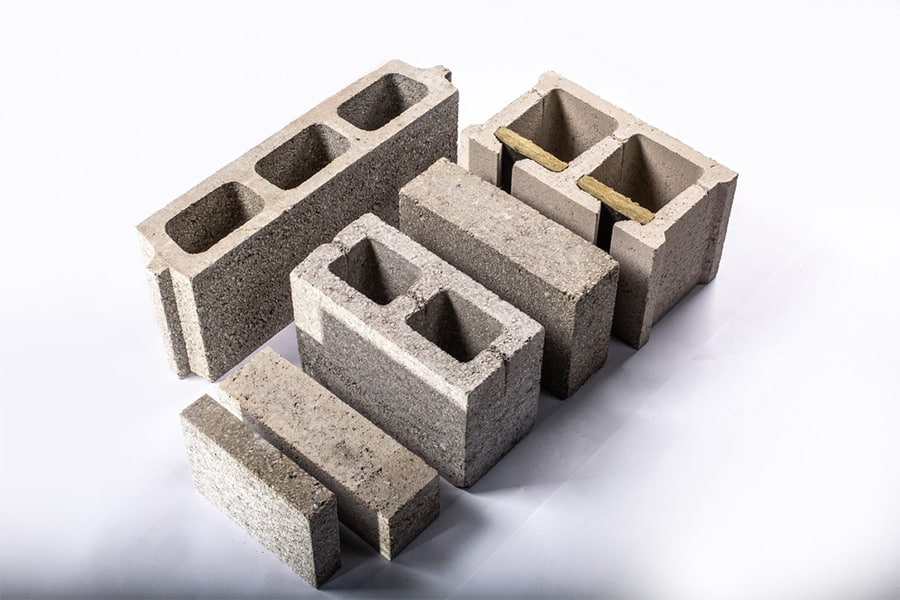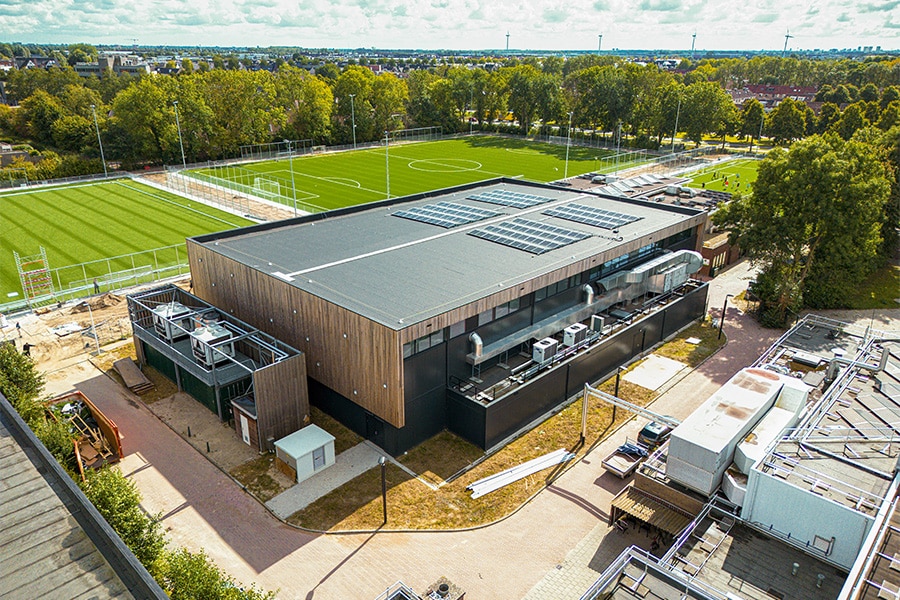
The Hague tow-bike viaduct | Construction Jan Linzelviaduct is a challenging project
The construction of the Jan Linzel Viaduct over the A4 has many challenges. The viaduct for cyclists between the Ypenburg district and The Hague city center has a total length of 335 meters. Not only the construction but also the transport of the enormous bridge sections required a great deal of knowledge and skill.
Within this project, Hillebrand, part of ASK Romein, was responsible for the construction and transportation of the bridge sections, accounting for approximately 900 tons of steel. The company specializes in manufacturing complex steel structures for the offshore sector and realizing hydraulic works such as bridges and locks. For this, it offers all the necessary facilities: deep-water yards with generous loading and unloading quays, large storage and production capacities, and employees with specific training. Willie
Lievense, project manager at Hillebrand:
"We manufacture steel structures of a very high level of quality. Our facilities in Vlissingen and Middelburg are therefore fully equipped to produce high-quality one-off specials
to be realized for both the offshore sector and bridge construction."
High quality
Bridge construction is a specialty with its own unique dynamics. Bridge projects are distinguished from other steel construction assignments by their long and intensive start-up period. The company spent more than a year engineering and constructing the nine individual bridge sections, which were completely realized in S355. "Hundreds of individual plates were welded together in a specific order to create the bicycle bridge in a box section," Lievense said. "The bicycle viaduct has two main spans of 85 meters each and five abutments that have a span of 33.8 meters each. The result is a very slender-looking slightly curved structure, which is only possible with steel."
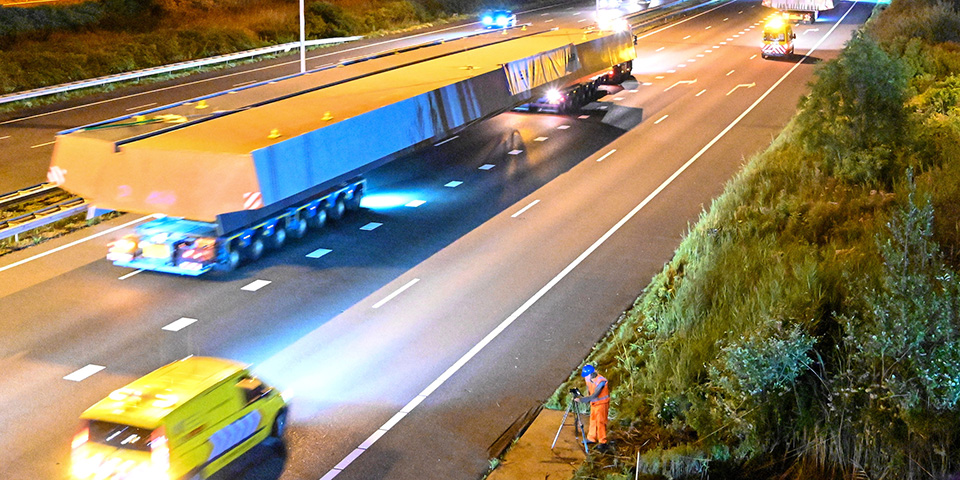
With special heavy transport by road.
Anchoring
The entire bridge is permanently anchored on one side. For the remaining supports on the concrete piers, sliding supports were created, allowing the bridge to expand and contract freely. This is necessary because of the expansions that can occur with temperature fluctuations.
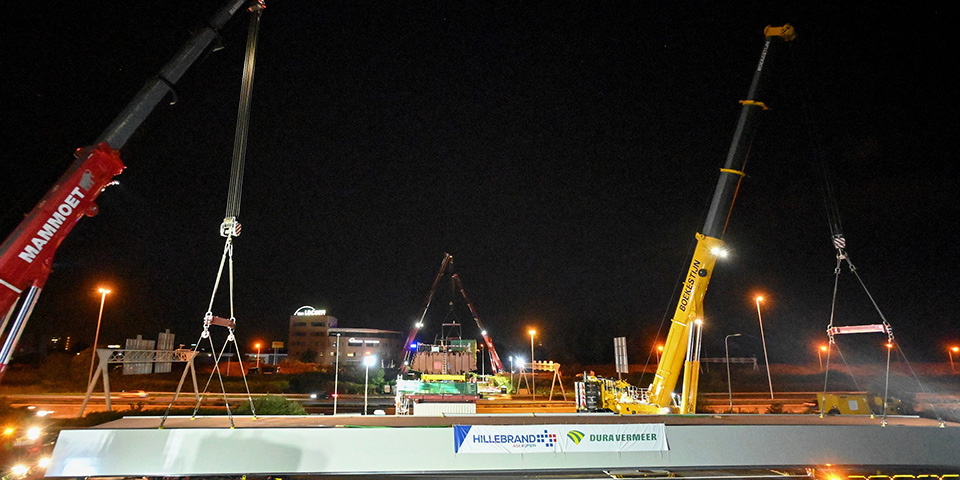
Transporting the huge bridge sections required a great deal of knowledge and skill.
Labor-intensive
Lievense: "Making one bridge section took about eight to nine weeks. There is a total of 900 tons of steel in the 6.5-meter-wide and 2.5-meter-high 335-meter-long tube. The main calculation was made by ABT in consultation with Dura Vermeer, our client. Based on that, we finalized the complete detail engineering and design, including the working drawings and production drawings."
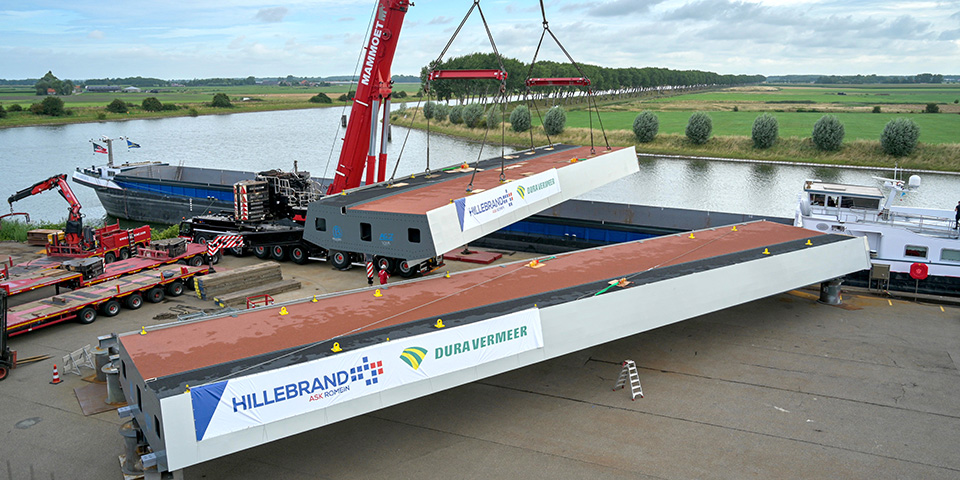
Transport by ship from Middelburg. (Image Patrick Hattori)
Challenging transportation
Transport to The Hague is actually the biggest challenge of the entire project. "Usually we build bridges that are over water," Lievense explains, "but this one goes over a highway and this has consequences for transport. The first four bridge sections were loaded into a boat at Hillebrand and were transported from there to Mammoet Road Cargo's facility in Schiedam. There the cargo was unloaded and taken to The Hague by special heavy transport on trailers." The A4 was closed for two nights so that mobile 750-ton cranes could be used to lift the first bridge sections into place. A detailed script was prepared for this, which also included traffic measures. "Closing a highway is a big deal. A 65-meter truck combi cannot just take corners and traffic circles. This required the removal of traffic signs, traffic lights and lampposts. It was a feat to get everything transported!" concludes Lievense.
Heeft u vragen over dit artikel, project of product?
Neem dan rechtstreeks contact op met ASK Roman.
 Contact opnemen
Contact opnemen
